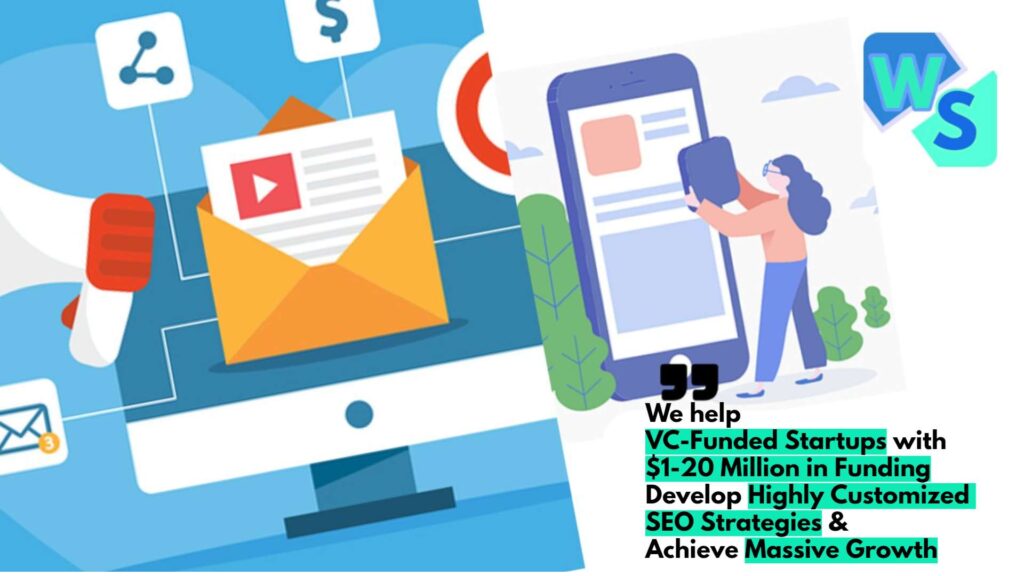Understanding the Marketing Mix
The marketing mix is a fundamental concept for developing a successful marketing strategy. It encompasses a set of elements that, when combined, help businesses achieve their marketing objectives. Understanding these components is vital for any CEO, CMO, founder, or business owner looking to grow their enterprise.
The 4Ps Concept
The four Ps of the marketing mix, comprising Product, Price, Place, and Promotion, were first introduced by E. Jerome McCarthy in 1960. These elements are essential for crafting an effective marketing strategy and are often interdependent (Investopedia).
- Product: This component represents the item or service designed to satisfy customer needs and wants. The focus here is on differentiating the product from competitors and identifying complementary products.
- Price: This element reflects what consumers are willing to pay. Factors to consider include costs involved in research, development, manufacturing, and distribution. Value-based pricing, which considers the consumer’s perceived value, is also crucial.
- Place: Also known as distribution channels, this involves determining where the product will be promoted and sold to reach the target demographic effectively. Different products require distinct distribution strategies.
- Promotion: This is about creating brand awareness through advertising, sales promotion, personal selling, and public relations. Effective promotion incorporates details from the other three Ps to reach the target audience.
| Marketing Mix | Description |
|---|---|
| Product | Item or service designed to meet customer needs. |
| Price | Consumer’s willingness to pay, considering costs. |
| Place | Distribution channels and promotional venues. |
| Promotion | Activities to create brand awareness. |
For more detailed information on these elements, you can explore our section on the 4ps of marketing.
Interplay of Elements
The elements of the marketing mix do not work in isolation. The interplay between these components is crucial for creating a cohesive marketing strategy. Here’s a closer look at how they interact:
- Product and Price: The value and quality of the product directly influence its pricing strategy. Higher perceived value can justify a higher price.
- Place and Promotion: Effective promotions require an understanding of where your target audience is most likely to engage with your product. This can range from online platforms to brick-and-mortar stores.
- Product and Promotion: The messaging in promotional activities should highlight the unique features and benefits of the product.
- Price and Place: The cost of distribution channels can affect pricing decisions. For premium products, exclusive distribution can justify a higher price point.
The synergy between these elements ensures that the marketing strategy is well-rounded and effective. For more on this, check out our in-depth marketing mix models.
By understanding the 4Ps and their interplay, you can craft a robust marketing strategy that addresses all critical aspects of your business.
Key Components of the Marketing Mix
Product Strategy
A central element of the marketing mix, the product represents an item or service crafted to meet customer needs and desires. This involves crafting a product strategy that ensures differentiation from competitors and identifies potential complementary products. This differentiation can be achieved through various tactics like innovation, quality enhancement, and unique features. To delve deeper into the product aspect, visit our detailed guide on product in marketing mix.
Some key differentiation strategies include:
- Product Innovation
- Quality Improvement
- Feature Enhancement
Pricing Strategies
Pricing strategies are pivotal in defining how a product is positioned in the market. These strategies involve analyzing various factors such as production costs, competitor pricing, and market demand. The goal is to optimize profits while meeting market expectations. Different approaches like cost-plus pricing, value-based pricing, and competitive pricing are employed based on the business objectives. For more insights, explore our article on price in marketing mix.
| Pricing Strategy | Description |
|---|---|
| Cost-Plus Pricing | Calculating total costs and adding a profit margin |
| Value-Based Pricing | Setting prices based on perceived value to the customer |
| Competitive Pricing | Pricing products based on competitors’ price points |
Distribution Channels
Distribution channels determine how a product reaches its end-users. These channels can be traditional, such as physical stores and direct sales, or modern, such as e-commerce and digital marketplaces. Choosing the right distribution strategy involves understanding the target market and how customers prefer to access products. More details can be found in our comprehensive article on place in marketing mix.
| Channel Type | Examples |
|---|---|
| Traditional | Physical stores, direct sales |
| Digital | E-commerce, online marketplaces, social media |
Promotion Techniques
Promotion involves various tactics to boost product visibility and sales. Effective promotion integrates different methods such as advertising, public relations, sales promotions, and direct marketing. The goal is to create a cohesive strategy that resonates with target customers. Promotion techniques can be further explored in our article on promotion in marketing mix.
| Promotion Type | Description |
|---|---|
| Pull Promotion | Attracting customers towards the product |
| Push Promotion | Pushing the product towards customers through channels |
| Sales Promotion | Short-term incentives to boost sales |
| Retail Promotion | Strategies focused within retail environments |
| E-commerce Promotion | Online strategies to drive sales on digital platforms |
Understanding and implementing these marketing mix components effectively can significantly enhance your business strategy and market positioning. To explore more about strategic implementation and case studies, check out our articles on marketing mix strategies and marketing mix examples.
Product in the Marketing Mix
Importance of Product
The product is a fundamental element of the marketing mix, representing an item or service designed to meet the needs and desires of customers. Understanding the importance of the product in the marketing mix involves several key aspects:
Customer Satisfaction: A well-designed product aims to address the specific demands of the target market, ensuring customer satisfaction and loyalty. This involves continuous market research and adapting the product to meet changing market needs. (Qwary)
Differentiation: Differentiating a product from competitors is essential. This can be achieved through unique features, superior quality, or innovative design. Differentiation helps in creating a strong brand identity and can provide a competitive edge. More on this can be found in marketing mix strategies.
Complementary Products: Identifying and developing complementary products can enhance the overall customer experience and increase the product’s value proposition. This strategy can lead to higher customer retention and attract new customers.
Differentiation Strategies
Differentiation is crucial for a product’s success in the marketplace. Here are some effective strategies:
Unique Selling Proposition (USP): Establish a unique selling point that highlights the product’s distinctiveness from competitors. This can be an innovative feature, exceptional quality, or a unique design element.
Quality and Innovation: Focus on high-quality materials, superior craftsmanship, and continuous innovation. Customers are often willing to pay a premium for products that offer exceptional quality and innovative features.
Branding: Building a strong brand identity through consistent messaging, visual identity, and customer experience. A powerful brand can differentiate a product and create a loyal customer base.
| Differentiation Strategy | Description |
|---|---|
| Unique Selling Proposition | Highlighting distinct features that set the product apart from competitors. |
| Quality and Innovation | Using high-quality materials and innovative design to enhance product appeal. |
| Branding | Developing a strong brand identity to create customer loyalty and distinguish the product in the market. |
Understanding the importance of the product and utilizing differentiation strategies effectively can help in creating a successful marketing mix. For more insights into the other components of the marketing mix, such as pricing strategies and promotion techniques, explore our detailed guides.
Pricing Strategy Essentials
The pricing strategy you choose is crucial in your broader marketing mix components, impacting your sales and revenue. Here’s an in-depth look at the essentials:
Cost Considerations
Setting the right price involves more than just picking a number. Marketing professionals need to account for various costs, including research, development, manufacturing, and distribution (Investopedia). Understanding these costs ensures businesses maintain profitability while staying competitive in the market.
Key Cost Factors:
- Labor Costs: Wages, benefits, and training for employees.
- Material Costs: Raw materials required for production.
- Overhead Costs: Rent, utilities, and administrative expenses.
- Markup Percentages: A percentage added to cover profits.
| Component | Cost Type | Example |
|---|---|---|
| Research & Development | Fixed | $100,000 (annual budget) |
| Manufacturing | Variable | $10 per unit |
| Distribution | Fixed and Variable | $2 per unit + $5,000 (monthly) |
| Marketing | Fixed and Variable | $20,000 (campaign) + $3 per unit |
Using cost-plus pricing (markup pricing) can help maintain consistent profit margins. However, this method can sometimes lead to high prices that might not cover all costs or align with consumer willingness to pay (Get Weave). For a deeper examination, refer to our section on price in marketing mix.
Value-Based Pricing
Value-based pricing focuses on what the consumer perceives as the product’s value or quality. This strategy is particularly effective for products seen as status symbols or of high quality (Investopedia). It requires deep understanding of your target audience and their willingness to pay.
Value-Based Pricing Highlights:
- Consumer Perception: Products are priced based on perceived value.
- Market Research: Data-driven insights into consumer behavior.
- Competitive Analysis: Understanding competitors’ price points.
- Brand Positioning: Aligning price with brand value and market goals.
For instance, luxury brands often use value-based pricing to reflect high-quality perception, thus attracting a specific clientele willing to pay a premium price.
Factors Influencing Value-Based Pricing:
- Quality Perception: Higher quality can justify higher prices.
- Brand Loyalty: Strong brands can command premium prices.
- Market Conditions: Economic factors and market demand.
- Competitor Pricing: How competitors’ prices influence perception.
According to HubSpot Blog, over 80% of consumers compare prices between competitors before making purchase decisions. This means your pricing strategy should account for both your costs and the perceived value to maintain competitiveness and profitability.
For more detailed strategies, explore our section on marketing mix pricing strategies. Utilizing both cost-based and value-based pricing strategies will help ensure you set prices that not only cover costs but also appeal to your target market.
Distribution Channels in Detail
Importance of Placement
Placement, often referred to as “place” in the 4Ps of marketing, is a critical component of the marketing mix. It involves determining the appropriate distribution channels and strategizing on where the product will be promoted to reach the target audience effectively. The goal is to ensure that the product is accessible to the customers at the right place and at the right time.
Placement decisions directly impact various aspects of the business, including inventory management, transportation costs, and overall customer satisfaction. According to Investopedia, different types of products call for different distribution strategies. This means that the placement strategy for basic consumer products will differ from that of premium consumer products.
To put it simply, placement is about getting the right product in front of the right customers at the right time. Whether a company is utilizing traditional retail stores or digital platforms, effective placement can significantly enhance a product’s market reach and boost sales.
Types of Distribution Channels
Understanding the different types of distribution channels is essential for crafting successful marketing mix strategies. Distribution channels can be categorized into several types, each serving different purposes and suited for various kinds of products.
| Distribution Channel Type | Description |
|---|---|
| Direct Distribution | Products are sold directly to consumers without intermediaries, often through company-owned stores or e-commerce websites. |
| Indirect Distribution | Products pass through intermediaries like wholesalers, distributors, and retailers before reaching consumers. |
| Intensive Distribution | Products are stocked in as many outlets as possible to provide maximum coverage, common for low-cost consumer goods. |
| Exclusive Distribution | Products are sold through a limited number of outlets, often used for premium or luxury items to maintain exclusivity. |
| Selective Distribution | Products are available in select outlets, balancing between intensive and exclusive distribution strategies. |
Direct Distribution: This approach involves selling products directly to consumers without intermediaries. Companies may utilize their own retail stores or e-commerce platforms for direct distribution. It’s especially effective for brands that want to maintain control over their customer experience.
Indirect Distribution: Indirect channels involve intermediaries such as wholesalers, retailers, and distributors. This strategy allows companies to leverage the strengths of their partners to reach a broader audience. For complex distribution networks, it’s vital to analyze and improve each channel’s performance to boost sales and brand reputation (OWOX).
Intensive Distribution: This method focuses on placing products in as many outlets as possible, maximizing product availability to consumers. It’s often applied to everyday consumer goods. By doing so, brands can ensure that their products are readily available wherever customers shop.
Exclusive Distribution: Exclusive distribution limits the number of outlets for a product, often used for premium or luxury items. This strategy helps maintain a sense of exclusivity and can elevate the brand’s image.
Selective Distribution: A middle-ground approach where products are available in select outlets. It provides broader coverage than exclusive distribution but maintains some level of control over where a product is sold.
For strategic insights on effectively combining these channels, refer back to our exploration of place in marketing mix and how placement impacts your overall marketing strategy.
By understanding and selecting the right distribution channels, businesses can effectively reach their target market, providing customers with easy access to their products. Whether through direct or indirect means, intensive, exclusive, or selective strategies, the goal remains the same: to get the products to the customers efficiently and effectively. For a deeper dive into the significance and opportunities of marketing channels, explore our article on significance of marketing channels.
Crafting Effective Promotion Tactics
Strategies behind promotion are essential in leveraging time and resources, creating product awareness, and generating consumer hype. These tactics enhance understanding of the target audience, making marketing efforts across all components more impactful (CoSchedule).
Promotional Mix Strategies
Promotion strategies can be divided into various categories, each tailored to different business models and target audiences. Some of the primary strategies include:
- Pull Promotion Strategy: Designed to draw customers towards your products using means like advertising and sales promotions.
- Push Promotion Strategy: Focuses on pushing products through marketing channels to reach customers, often using trade promotions.
- Sales Promotion Strategy: Utilizes short-term incentives like discounts and coupons to drive sales.
- Retail Promotion Strategy: Targets end consumers directly through in-store promotions and offers.
- Ecommerce Promotion Strategy: Leverages online platforms to promote products and reach a wider audience.
These strategies can be used independently or in combination to maximize their effectiveness. Businesses like Apple, Nike, and Amazon utilize varied strategies to promote their products through different promotional channels (CoSchedule).
Leveraging Various Channels
Using multiple channels for promotion is crucial to reaching different segments of the target market. Companies employ a mix of traditional and digital channels based on their audience and product type. Here are some key channels:
| Channel Type | Examples |
|---|---|
| Traditional | Commercials, Print Ads, Billboards |
| Digital | Social Media, Mobile Ads, Email Marketing |
| Hybrid | Word-of-Mouth, Influencer Collaborations, Video Commercials |
Table of Promotional Channels
| Company | Channels Used |
|---|---|
| Apple | TV Commercials, Social Media, Billboards |
| Nike | Print Ads, Mobile Ads, Influencer Collaborations |
| Amazon | Email Marketing, Social Media, Video Commercials |
| Starbucks | In-Store Promotions, Mobile Ads, Word-of-Mouth |
By utilizing a diverse mix of channels, businesses ensure their promotional messages reach the right audience at the right time. For more details on structuring these strategies, you can explore our promotion in marketing mix article.
To delve even deeper into other aspects of marketing, including pricing strategies, distribution channels, or product differentiation, explore the related topics within our comprehensive guide on the 4Ps of marketing.
Extended Marketing Mix Approach
To truly elevate your strategic marketing, a nuanced understanding of the extended marketing mix approach is essential. Beyond the traditional 4Ps, additional components such as people, physical evidence, and process are critical for a customer-centric focus.
Incorporating People, Physical Evidence, Process
The extended marketing mix approach recognizes that to create a comprehensive and effective strategy, it’s crucial to consider more than just product, price, placement, and promotion. The inclusion of people, physical evidence, and process ensures that all aspects of the customer experience are addressed (Investopedia).
| Extended Marketing Mix Components | Description |
|---|---|
| People | Refers to all individuals involved in the delivery of the product or service. This includes employees, sales staff, and any person representing the brand. High-quality customer service and a skilled workforce enhance customer satisfaction. |
| Physical Evidence | Relates to the tangible aspects that customers encounter in their interaction with the product or service. This includes packaging, branding, and the physical environment in which the service occurs (e.g., stores, online platforms). Providing consistent quality and aesthetics instills trust and confidence. |
| Process | Encompasses the procedures, mechanisms, and flow of activities that deliver the product or service to the customer. Efficient and transparent processes ensure a seamless customer experience and improve overall satisfaction. |
Incorporating these elements allows businesses to create a holistic strategy that emphasizes the importance of customer experience at every touchpoint.
Customer-Centric Focus
A customer-centric approach is pivotal in modern marketing strategies. By integrating people, physical evidence, and process into the marketing mix, businesses can better cater to the specific needs and preferences of their target audience. This not only enhances the customer experience but also drives brand loyalty and long-term success.
People: Employees play a crucial role in shaping customer perceptions. Investing in training and development ensures that staff can effectively represent the brand and provide exceptional service. The right people can make or break a customer’s experience, leading to repeat business and positive word-of-mouth promotion.
Physical Evidence: The tangible elements of the brand, such as packaging, storefronts, and websites, should align with the brand’s values and messaging. Consistency in physical evidence builds trust and helps customers to recognize and remember the brand. For more on the importance of consistent branding, visit our article on brand consistency.
Process: Efficient processes ensure that customers receive their products or services in a timely and satisfactory manner. Streamlining operations, incorporating technology, and continuously improving processes are essential for maintaining a competitive edge. Learn more about optimizing marketing processes in our detailed guide on marketing process optimization.
By focusing on these additional elements, businesses can create a more robust and effective marketing strategy that not only attracts but also retains customers. This holistic approach ensures that every aspect of the customer journey is considered, leading to a more satisfying experience and stronger brand loyalty. For more insights on creating a customer-centric strategy, explore our articles on strategic marketing and customer experience.
Significance of Marketing Channels
Understanding the role of effective marketing channels is critical for any business looking to optimize their marketing mix components. Channel marketing involves collaboration between a company and retail or distribution partners to tap into their strengths and widen reach, thus boosting both sales and brand reputation (OWOX).
Leveraging Digital Channels
In the digital age, online marketing channels are indispensable for promoting products and services, introducing them to potential buyers, and influencing consumer decisions. According to CoSchedule, a significant number of consumers utilize digital channels for product research. Here are some key digital channels:
- SEO (Search Engine Optimization): Optimizing your website to rank higher in search engine results.
- SEM (Search Engine Marketing): Paid advertising to increase visibility on search engines.
- Content Marketing: Creating valuable content to attract and engage users.
- Social Media Marketing: Platforms like Facebook, Instagram, and LinkedIn to promote your brand.
- Email Marketing: Direct communication with customers to drive sales and build relationships.
- Online PR: Gaining online visibility through press releases and media coverage.
- Mobile Apps and Mobile Ads: Reaching users directly on their smartphones.
Optimizing the mix of marketing channels is crucial for converting potential customers into buyers. Ads, social media, and email marketing are just a few methods that guide individuals through the purchasing process (OWOX).
Traditional vs. Digital Marketing
Despite the rise of digital channels, traditional marketing channels like TV, radio, print media, outdoor advertising, events, and sponsorships remain relevant. These channels continue to offer wide reach and effectiveness, especially when targeting specific demographics (OWOX).
A balanced approach involving both traditional and digital channels can be beneficial. Below is a comparison of traditional and digital marketing channels:
| Marketing Channels | Examples | Strengths |
|---|---|---|
| Traditional | TV, Radio, Print Media, Outdoor Advertising, Events, Sponsorships, Telemarketing | Wide Reach, High Brand Recall, Effective for Mass Marketing |
| Digital | SEO, SEM, Social Media, Email Marketing, Online PR, Mobile Ads | Targeted Marketing, Real-Time Analytics, Cost-Effective, High Engagement |
Both traditional and digital channels have their unique advantages. By understanding the strengths of each channel, businesses can craft a strategic marketing mix that leverages the right combination of methods to achieve their marketing goals.
For more insights on channel marketing, visit our articles on place in marketing mix and promotion in marketing mix.
Pricing Strategies for Success
Crafting effective pricing strategies is fundamental to the success of any business. Optimizing the elements of the marketing mix components involves careful consideration of pricing to balance profitability and market competitiveness.
Price Setting Considerations
When setting prices, it’s essential to consider various business factors, including the cost of products, competitor pricing, and market demand (HubSpot Blog). Here are some key considerations:
- Cost of Goods Sold (COGS): This includes the actual cost of producing the product, such as labor, materials, and overhead.
- Formula for Cost-Plus Pricing:
COGS + Markup Percentage = Selling Price
- Example:
- If COGS = $50 and Markup Percentage = 20%
- Selling Price = $50 + (0.20 * $50) = $60
Competitor Pricing: Analyzing competitor prices helps in positioning your product effectively in the market. It’s crucial for staying competitive and appealing to price-sensitive customers.
Market Demand: Understanding the demand and price sensitivity can influence setting a price that maximizes sales without deterring potential customers. Price elasticity of demand is critical here – ideally, products should exhibit inelastic demand (HubSpot Blog).
Consumer Perception: How consumers perceive the value of your product can heavily influence their willingness to pay. Premium pricing can create an image of high quality, while lower prices can appeal to budget-conscious buyers.
Impact of Pricing Models
Implementing various pricing models can lead to a variety of business outcomes. Here are a few models and their impacts:
- Cost-Plus Pricing: Focuses on covering COGS and providing a consistent profit margin.
- Pros: Simple to calculate, ensures a profit return
- Cons: May lead to high prices, potential difficulty in covering all costs
- Value-Based Pricing: Sets prices based on perceived value to the customer rather than solely on costs.
- Pros: Can extract more value from customers willing to pay a premium
- Cons: Requires deep understanding of customer value perception
- Competitive Pricing: Setting prices based on competitor levels.
- Pros: Keeps products competitively priced
- Cons: Risk of price wars, potentially reduced margins
- Dynamic Pricing: Prices are adjusted based on real-time supply and demand.
- Pros: Maximizes revenue opportunities
- Cons: Can confuse or upset customers if not managed transparently
For successful business strategies, it’s beneficial to integrate these pricing models into your overall marketing mix strategies.
Table: Pricing Models and Impacts
| Pricing Model | Pros | Cons |
|---|---|---|
| Cost-Plus | Simple, ensures a profit | Can lead to high prices |
| Value-Based | Maximizes perceived value | Requires deep customer insight |
| Competitive | Keeps prices competitive | Risk of price wars |
| Dynamic | Maximizes revenue | Potential customer confusion |
To improve profit margins, generate more sales, and build customer loyalty, businesses must adopt appropriate pricing strategies (Get Weave). For a more in-depth guide on different pricing strategies and models, refer to our section on marketing mix pricing strategies. Understanding these considerations and their impacts can significantly enhance the effectiveness of your marketing mix analysis and overall business performance.



















